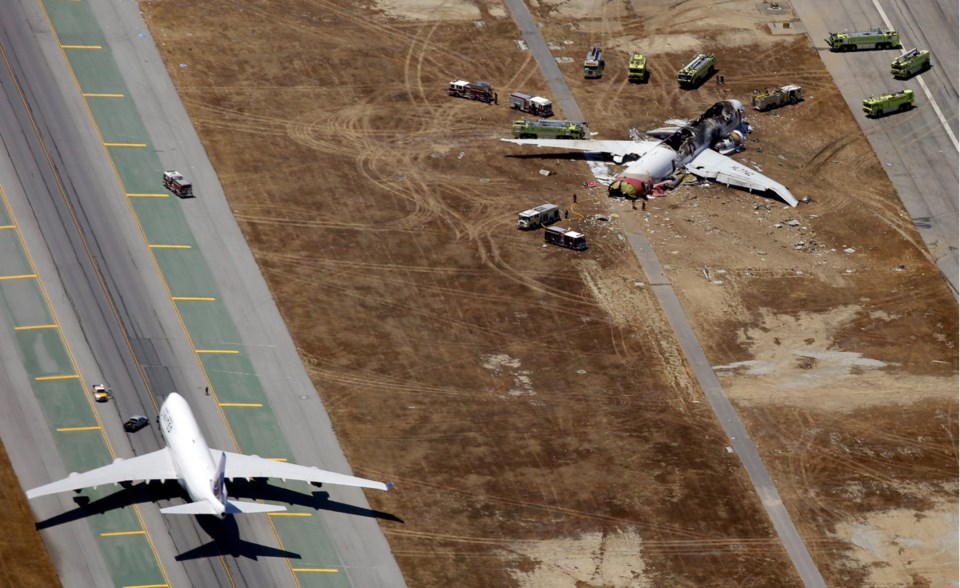Saturday was bound to be a long day, with four flights taking us from Brisbane to Sydney to San Francisco to Vancouver and then to Victoria. From hotel to home, 28 hours.
Eight minutes after we landed in San Francisco, an Asiana Boeing 777 came in too low and too slow, leaving two people dead and many others injured, and shutting down the airport.
Let’s hope a crash like that never happens here — but, odds are, a disaster of some sort will hit us someday. Surely there are things we could learn from San Francisco.
We live in the information age, but the people running the airport apparently never got that tweet. In any disaster, a communication plan is critical. At San Francisco airport on Saturday and Sunday, communication was abysmal.
Our first hint of a problem came after we cleared immigration and customs, and headed to our next gate.
We heard other passengers talking about a crash, and then saw it on a television as we walked past a restaurant. We stopped to see where it had been. Oh. San Francisco.
Sure enough, the crash site was visible through a window. It was horrifying to realize what had happened, and how many might be dead — but then word spread that survivors had reported in on Twitter. That was a relief. Keep calm and carry on.
Our 2 p.m. flight to Vancouver was still showing as on time, but other passengers were saying that the airport had been closed.
A few minutes later, a United Airlines employee announced there had been an “incident,” so there would be no flights for a while. Would that incident involve the plane out there? She couldn’t say.
No one could for the next 33 hours. United staff helped book new flights and find bags, once we got through the enormous lineups. But beyond that, they knew nothing about the “incident.”
That would have been fine if we were getting information from an official source, but we weren’t. So stranded travellers fought spotty Wi-Fi and cell networks to get any details. They passed around information from CNN and Twitter, rather than from anyone in a position of authority.
We heard the airport had been closed, and we all had to leave. We heard the exits had been closed, so nobody could leave. Departures were being bumped back by 45 minutes, then another 45 minutes. What to do? Nobody knew.
I traded our 2 p.m. flight to Vancouver for a 9:40 p.m. flight to Victoria, hoping the airport would be open.
A United employee returned to say there would be no more announcements where we were in Terminal 1. Go elsewhere, she said. I decided to try Terminal 3, which meant going through security again.
But we were denied entry at both Terminal 3 security points — only airport or airline employees were being allowed in. We carried on to the international terminal, cleared security there, then used the connecting hallway to get back to Terminal 3, on the secure side of the security gates.
So much for security lockdown.
Our 9:40 flight was cancelled at 6:30. We waited two hours in line to rebook before deciding we were still at least two hours from the counter. Enough. Off to a hotel.
By then many hotels were sold out and, at others, room rates had soared. Budget hotels wanted $400 for the night. Some hotels were charging three times the rates they had been charging a few hours earlier. They were keen believers, I guess, in the law of supply and demand.
Back to communication. Yes, after an airplane crashes, the priority needs to be victims and family members. But not everyone in authority will be busy with a fire extinguisher or comforting a loved one.
Surely, somebody could have given facts to the thousands of travellers desperate for them. As it was, airport and airline employees were facing the same questions over and over again, but were unable to answer.
Airport authorities created more work for everyone because of their reluctance to discuss the “incident” or its ramifications.
They created stress when they should have been relieving it. They failed a basic test in a crisis.
Keep the people informed. It’s as simple as that.



